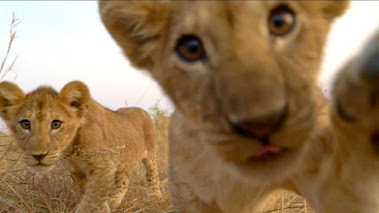Lions in Literature: Characters and Metaphors
"Lions in Literature: Characters and Metaphors"
Within the realm of literature, where imagination
intertwines with language, lions emerge as captivating characters and potent
metaphors that illuminate the human experience in profound and diverse ways.
Whether prowling the pages of ancient myths or roaring through the modern
narratives of novels, lions symbolize courage, power, and the untamed aspects
of existence. This article delves into the rich tapestry of lions in
literature, exploring their roles as characters, symbols, and mirrors of the
human psyche.
Lions in Ancient Mythology: Symbolism and Allegory
From the ancient civilizations of Egypt and Mesopotamia to
the myths of Greece and beyond, lions have held a sacred and symbolic presence
in mythological narratives.
1. The Nemean Lion: In Greek mythology, the Nemean
lion was a fearsome creature slain by the hero Hercules as one of his twelve
labors. The lion's impenetrable hide became a symbol of invincibility,
representing the triumph of human will over seemingly insurmountable
challenges.
2. Egyptian Royalty: In ancient Egypt, lions were
associated with royalty and power. Sphinxes, statues with lion bodies and human
heads, adorned temples and tombs, symbolizing the fusion of human intelligence
and animal strength.
3. Biblical and Judeo-Christian Symbolism: Lions
appear in biblical texts as metaphors for strength, courage, and divine
protection. The lion of Judah, mentioned in the Book of Genesis, represents
leadership and the lineage of King David.
Lions in Folklore and Fables: Moral Lessons
In folktales and fables from various cultures, lions embody
moral lessons and teach timeless truths.
1. Aesop's Fables: Lions often appear in Aesop's
fables as symbols of authority and the consequences of arrogance. The fable of
"The Lion and the Mouse" illustrates the idea that even the mightiest
can be humbled by the smallest.
2. African Folklore: In African oral traditions,
lions are central figures in stories that impart cultural values and wisdom.
They symbolize strength, cunning, and the delicate balance between humans and
the wild.
Lions in Modern Literature: Complex Characters
In modern literature, lions evolve from symbolic
representations to complex characters that reflect a range of human emotions
and experiences.
1. "The Lion, the Witch and the Wardrobe":
In C.S. Lewis's classic fantasy novel, Aslan the lion embodies qualities of
wisdom, sacrifice, and redemption. His presence serves as a guiding force for
the young protagonists as they navigate a magical world.
2. "Life of Pi": Yann Martel's novel
features Richard Parker, a Bengal tiger named after a clerical error in which
"Thirsty" was mistaken for "Richard Parker." The character
becomes a manifestation of the protagonist's survival instincts and primal
nature.
3. Symbolism of Power and Freedom: In contemporary
literature, lions often represent themes of power, freedom, and the quest for
identity. They serve as metaphors for characters seeking to assert themselves
in a complex world.
Metaphorical Lions: Unleashing Human Potential
Lions, as metaphors, challenge readers to explore the depths
of human potential and resilience.
1. Confronting Fears: The lion's fierce nature
mirrors humanity's capacity to confront and conquer its fears. Characters
facing adversity draw strength from the lion's symbol of courage.
2. Taming the Wild Within: Lions in literature often
symbolize the untamed aspects of the human psyche. Characters grappling with
inner conflicts or desires must confront their "inner lion" to
achieve self-mastery.
3. The Quest for Identity: Lions embody the journey
of self-discovery and identity formation. Characters who align with the lion's
attributes strive to understand their place in the world and fulfill their
destinies.
4. The Dance of Dualities: Lions' dual
nature—ferocity and majesty—reflects the intricate dance of light and shadow in
human existence. Characters navigating moral complexities mirror the lion's
duality.
Conclusion: The Roar of Literary Lions
In the vast expanse of literature, where words weave worlds
and stories sculpt landscapes, lions emerge as vibrant characters and
multifaceted metaphors. From ancient myths to contemporary novels, the lion's
roar resonates as a universal symbol of strength, courage, and the enigmatic
aspects of human nature.
As we journey through the pages of literary narratives
adorned with lions, we recognize that these creatures are not merely
characters—they are reflections of our collective human experience. Through
their stories, we explore the depths of our emotions, the challenges we face,
and the untamed potential that resides within us all. In the tapestry of
literature, the lion roars not only with its own voice but with the echoes of
our aspirations, fears, and triumphs.

.jpg)


Comments
Post a Comment